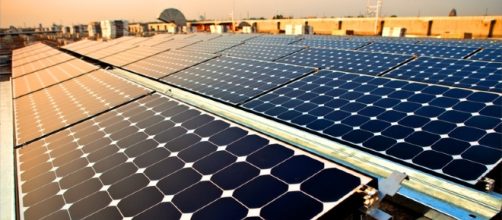Singapore will be commissioning the world's largest floating solar panel testbed by end of 2016 as part of its plan to harness clean or renewable energy. The one-hectare testbed at one of the country's reservoirs at Tengah is slated to produce one megawatt (MWp) of energy. If its efficacy is proven, it will supplement land-based solar panels currently used in this 720 sq km island where land is at a premium.
Different PV modules tested
The study involves 10 different types of floating structures and photovoltaic modules (PV) which will be assessed for a period of six months.
The two best performing systems will progress to the next phase, according to the Solar Energy Research Institute of Singapore (SERIS) at the National University of Singapore which manages the testbed.
Summing up the national drive to accelerate the adoption of solar power, Economic Development Board's Executive Director of CleanTech, Goh Chee Kiong said Singapore has 'identified floating solar capabilities as a key focus'. He added that steps are being taken to groom local enterprises and attract international companies to co-innovate and export their technology from Singapore.
Working collaboratively, several government agencies are involved in the push to harness renewable energy and SERIS is one of many initiatives to build up local capabilities and infrastructure as well as to position the country as a living laboratory.
Economic, technical and environmental impact study
Apart from reduced carbon footprint, it will be important to confirm its viability and expected benefits like the cooling effect of water that can improve efficiency of the floating system, while contributing to reduce evaporation of water from the reservoir. The research will study the economic, technical and environment impact of floating PV modules. Eight companies are participating in the pilot project including big corporations from Japan and Italy, apart from local enterprises.
The 'steep learning curve' like challenges to feed electricity to the substation and ensuring the integrity of the floating PV modules were factors contributing to the delay of the testbed launch.
It was originally scheduled for 2013, according to the chief sustainability officer, Tan Nguan Sen of PUB, the national water agency.
Harnessing 350 MWp on land and water
With the nation committed to produce 350 MWp of solar power or five percent of its energy needs, the successful development of floating solar panels will free up precious land space.
Singapore's journey to tap solar power is being coordinated by the Housing and Development Board (HDB). More than 80 percent of local resident population are staying in apartments built by the HDB which began test-bedding land-based solar projects from 2008. Building tops are an obvious choice to install solar panels because of a lack of open space owing to the high population density of above 8,000 per sq km.
Having built up expertise, the HDB is working with government agencies to built PV modules atop residential and other buildings. Towards this end, the HDB is committed to provide up to 220MWp of energy by 2020 from solar power projects it is managing on land.

